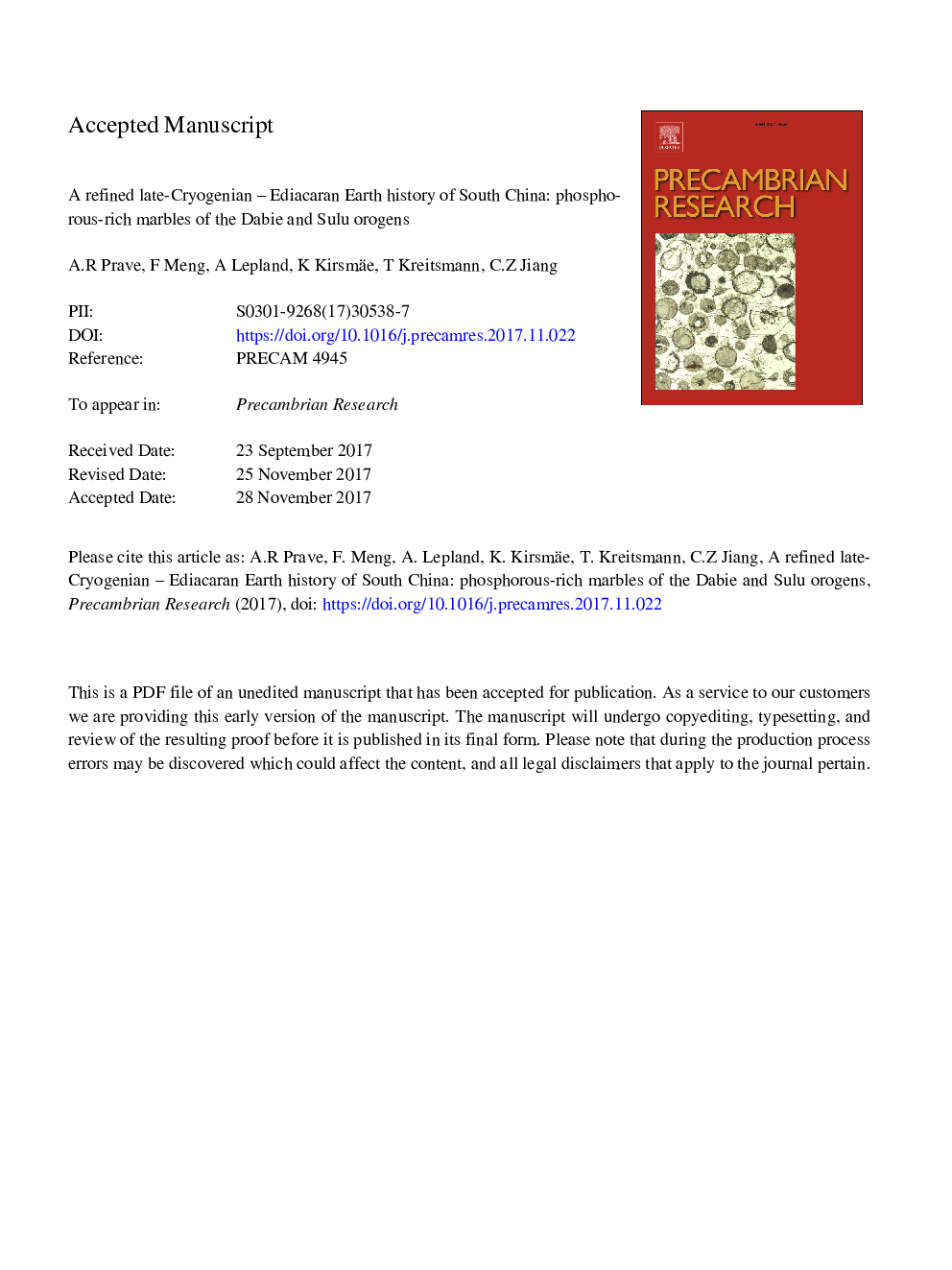| Article ID | Journal | Published Year | Pages | File Type |
|---|---|---|---|---|
| 8912662 | Precambrian Research | 2018 | 42 Pages |
Abstract
The late-Cryogenian - Ediacaran geological framework for South China is constructed principally from sedimentary successions preserved in the central and western regions of the Yangtze Block. New stratigraphic and carbonate-carbon isotope data allow us to extend that framework into the exhumed HP-UHP subduction complexes of the eastern Dabie and Sulu orogens that separate the South and North China cratons. Those data show that marble and phosphorous-rich (P-rich) units in those complexes were originally part of an Ediacaran shallow-marine shelf-carbonate platform. The basal pebbly schist (metadiamictite) and lowermost P-rich marble of the Jinping Formation (Haizhou Group) in the Sulu Orogen matches in both facies character and C-isotope profile that of the Marinoan-equivalent glacial-cap carbonate couplet of the Nantuo and Doushantuo formations. The Daxinwu Formation (Susong Group) in the eastern Dabie Orogen contains a marble unit that has, for several hundreds of metres, a strikingly uniform C-isotope profile of low δ13C positive values and is overlain by a P-rich graphitic schist; these features match those of the late Ediacaran to early Cambrian Dengying Formation. These correlations establish that the HP-UHP metasedimentary rocks, many of which were once considered to be Palaeo- to Mesoproterozoic in age, are a Neoproterozoic-age cover sequence of the continental margin of the Yangtze Block. Further, their widespread development limits their utility as indicators of offset across the Tan-Lu fault zone and, instead, favours tectonic models that interpret that feature as a continental-scale tear fault formed during the Mesozoic collision and suturing of the North and South China cratons.
Related Topics
Physical Sciences and Engineering
Earth and Planetary Sciences
Geochemistry and Petrology
Authors
A.R Prave, F.W Meng, A Lepland, K Kirsimäe, T Kreitsmann, C.Z Jiang,
